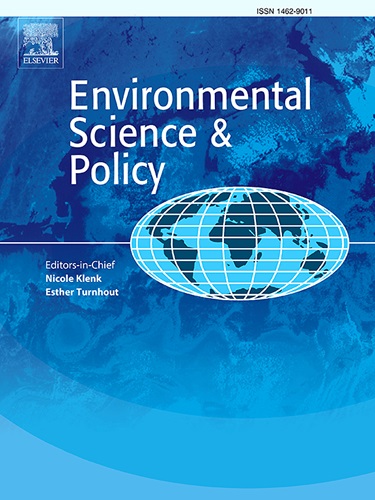将文化资源和遗产纳入气候行动:对九个气候计划的审查
IF 5.2
2区 环境科学与生态学
Q1 ENVIRONMENTAL SCIENCES
引用次数: 0
摘要
本研究通过确定将文化资源纳入政策的关键切入点,考察了文化资源与气候治理的整合。通过对9个国家、地区和城市气候计划的分析,我们评估了文化资源在可持续气候行动中是被动因素还是主动因素。使用系统的编码过程,我们将参考文献分为三个维度——概念化、政策背景和治理处理——为评估其作用和变革潜力提供了一个结构化框架。分析中出现了17个反复出现的切入点,代表了促进文化资源融入气候规划的关键行动。这些切入点揭示了在治理框架内加强适应、减少风险和缓解战略中的文化资源管理的机会。它们不是作为规范性措施,而是反映了共同的政策主题,并提出了加快变革性治理的具体途径。我们的研究结果证实了文化资源在气候行动中的广泛认可,并强调了利益相关者对话以及将有形和无形文化元素纳入其中的重要性。然而,重大差距仍然存在,包括监测和评价机制不足,跨部门整合薄弱,以及阻碍无形属性运作的狭隘定义。我们的结论是,充分利用文化资源进行变革性气候治理需要关系性、反思性和多层次的方法。此类战略必须在现有治理体系内优化文化资源管理,同时关键解决限制其变革潜力的更广泛的不可持续模式——结构性不平等、部门孤岛和僵化的政策框架。本文章由计算机程序翻译,如有差异,请以英文原文为准。
Integrating cultural resources and heritage in climate action: A review of nine climate plans
This study examines the integration of cultural resources into climate governance by identifying key entry points for their inclusion in policy. Analyzing nine national, regional, and municipal climate plans, we assess whether cultural resources function as passive elements or active contributors to sustainable climate action. Using a systematic coding process, we categorize references into three dimensions—conceptualization, policy context, and governance treatment— providing a structured framework for evaluating their role and transformative potential. Seventeen recurring entry points emerge from the analysis, representing key actions that facilitate cultural resource integration into climate planning. These entry points reveal opportunities within governance frameworks to enhance cultural resource management in adaptation, risk reduction, and mitigation strategies. Rather than serving as prescriptive measures, they reflect common policy themes and suggest context-specific pathways to accelerate transformative governance. Our findings confirm widespread recognition of cultural resources in climate action and underscore the importance of stakeholder dialogue and the inclusion of both tangible and intangible cultural elements. However, significant gaps persist, including insufficient monitoring and evaluation mechanisms, weak cross-sectoral integration, and narrow definitions that hinder operationalizing intangible attributes. We conclude that fully leveraging cultural resources for transformative climate governance requires relational, reflexive, and multi-level approaches. Such strategies must optimize cultural resource management within existing governance systems while critically addressing broader unsustainable patterns—structural inequalities, sectoral silos, and rigid policy frameworks—that limit their transformative potential.
求助全文
通过发布文献求助,成功后即可免费获取论文全文。
去求助
来源期刊

Environmental Science & Policy
环境科学-环境科学
CiteScore
10.90
自引率
8.30%
发文量
332
审稿时长
68 days
期刊介绍:
Environmental Science & Policy promotes communication among government, business and industry, academia, and non-governmental organisations who are instrumental in the solution of environmental problems. It also seeks to advance interdisciplinary research of policy relevance on environmental issues such as climate change, biodiversity, environmental pollution and wastes, renewable and non-renewable natural resources, sustainability, and the interactions among these issues. The journal emphasises the linkages between these environmental issues and social and economic issues such as production, transport, consumption, growth, demographic changes, well-being, and health. However, the subject coverage will not be restricted to these issues and the introduction of new dimensions will be encouraged.
 求助内容:
求助内容: 应助结果提醒方式:
应助结果提醒方式:


